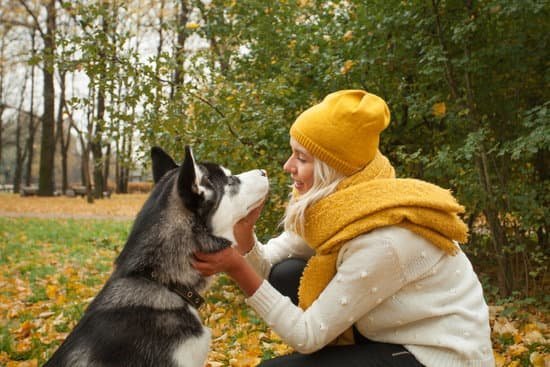Are you tired of constantly having to chase after your dog to retrieve the ball during a game of fetch? Training your furry friend to bring the ball back to you can make playtime more enjoyable for both you and your pet. In this article, we will explore the essential steps on how to train a dog to give you the ball, from understanding their natural instincts to incorporating rewards and positive reinforcement.
Understanding your dog’s natural instincts is crucial when it comes to teaching them how to retrieve. Dogs are instinctively drawn to objects that they can chase, catch, and carry in their mouths. By tapping into these natural behaviors, you can effectively train your dog to fetch and return the ball on command. Choosing the right type of ball for training is also important, as it can greatly impact your dog’s motivation and enthusiasm during the training process.
Building a positive association with the ball is another key aspect of training your dog to retrieve. By making the ball an object of interest and excitement, you can encourage your dog to willingly bring it back to you.
With a step-by-step training process and the incorporation of rewards and positive reinforcement, you can effectively teach your dog how to give you the ball during a game of fetch. Let’s dive into each of these aspects in more detail as we explore the importance of teaching your dog to retrieve.
Understanding Your Dog’s Natural Instincts
Dogs have been bred for specific purposes throughout history, and many breeds have a natural instinct to retrieve objects. This instinct can be traced back to their ancestors, who were hunters and gatherers. Understanding your dog’s natural instincts will help in training them to retrieve a ball.
Instinctual Retrieval Behavior
Some breeds are more predisposed to retrieving behavior than others. Labradors, Golden Retrievers, and Border Collies are examples of breeds known for their innate ability to fetch objects. These dogs have been selectively bred for generations for traits that make them excellent retrievers. However, this doesn’t mean that other breeds cannot be trained to fetch. It just means that some dogs may require more patience and guidance during the training process.
Prey Drive
Another natural instinct that influences a dog’s willingness to retrieve is their prey drive. Prey drive refers to a dog’s desire to chase and catch moving objects, similar to how they would pursue prey in the wild.
Dogs with a high prey drive often find it easier to engage in fetching activities because they enjoy pursuing and capturing the ball as if it were prey. Understanding whether your dog has a high or low prey drive can help you tailor your training approach to suit their individual needs.
Breed Characteristics
Different breeds have different characteristics and temperaments that can affect their willingness and ability to retrieve. For example, herding breeds may exhibit behaviors related to herding or gathering items, while sporting breeds may display an eagerness for retrieving due to their hunting background. Considering these breed-specific traits will allow you to capitalize on your dog’s natural inclinations when training them to give you the ball.
Choosing the Right Ball for Training
When training your dog to retrieve a ball, it is essential to choose the right type of ball for their training. The right ball can make all the difference in successfully teaching your furry friend this important skill. Here are a few factors to consider when selecting the perfect ball for training:
- Size: The size of the ball should be appropriate for your dog’s breed and mouth size. A small dog might have difficulty retrieving a large ball, while a larger dog might find a small ball too easy to pick up.
- Material: The material of the ball is crucial for both safety and durability. Look for balls made of non-toxic materials that can withstand your dog’s chewing and retrieving efforts without falling apart.
- Texture: Dogs are very sensitive to texture, so consider this when choosing a ball. Some dogs prefer rubbery textures, while others may enjoy fetching a softer or smoother surface.
- Visibility: Opt for a brightly colored ball that is easy for your dog to see, especially if you’ll be playing fetch in outdoor environments. A highly visible color will help maintain your pet’s interest and avoid losing the ball during playtime.
By carefully considering these factors and choosing the right ball for your dog’s training, you’ll set them up for success in learning how to retrieve and have an enjoyable experience during training sessions. Remember that finding the perfect ball may require some experimentation, as every dog has its preferences.
Building a Positive Association With the Ball
One of the most crucial aspects of training a dog to give you the ball is to build a positive association with the ball. This means that your dog should see the ball as something fun and rewarding, rather than something they are being forced to do. Dogs respond well to positive reinforcement, and creating a positive association with the ball will make them more eager to engage in fetch and retrieve activities.
To build a positive association with the ball, start by introducing the ball as a toy during playtime. Allow your dog to interact with the ball freely, showing interest in it and exploring its texture and shape. Encourage your dog to chase after the ball by rolling it across the floor or gently tossing it in their direction. This will help them associate the ball with fun and play.
It’s important to avoid using negative reinforcement or punishment when training your dog with the ball, as this can create fear or anxiety around the object. Instead, focus on making interactions with the ball a rewarding experience for your dog. Incorporate treats, belly rubs, or verbal praise when they show interest in or retrieve the ball. By creating a positive association with the ball, you are laying a solid foundation for successful fetch training with your dog.
Step-by-Step Training Process for Fetch
When teaching your dog to retrieve a ball, it’s important to follow a step-by-step process to ensure that your furry friend understands what is expected of them. Here are the key steps to successfully train your dog to give you the ball:
1. Introducing the Ball: Start by introducing the ball to your dog in a controlled environment. Show them the ball, allow them to sniff it, and get familiar with it before moving on to the next steps.
2. Engaging Your Dog: Use positive reinforcement such as treats or verbal praise to encourage your dog to show interest in the ball. Throw the ball a short distance and encourage your dog to bring it back to you.
3. Teaching “Drop It” Command: Once your dog retrieves the ball, teach them the “drop it” command by offering a treat in exchange for releasing the ball. This step is crucial for getting your dog to willingly give you the ball without resistance.
4. Repeat and Reinforce: Practice this sequence repeatedly, gradually increasing the distance you throw the ball and making sure to reinforce positive behavior with rewards each time.
By following these steps consistently and patiently, you can effectively train your dog to retrieve and give you the ball.
Remember that every dog learns at their own pace, so be patient and maintain consistency in your training approach. Over time, with practice and positive reinforcement, your canine companion will become a pro at fetching the ball for you.
Troubleshooting Common Issues
Training your dog to retrieve the ball can come with its own set of challenges, but understanding common issues and troubleshooting them can make the process smoother and more effective. One common problem that owners encounter is when their dog shows no interest in the ball. This could be due to a lack of understanding or association with the object. To tackle this issue, it’s important to build a positive association with the ball using treats or favorite toys.
Another issue that may arise during training is when the dog retrieves the ball but does not bring it back to you. This behavior can be frustrating, but it often indicates that the dog has not fully grasped the concept of “fetch.” To address this, consider using a longer leash during training sessions and gently guiding your dog back to you while offering plenty of praise and rewards.
Some dogs may show possessive behavior over the ball and become unwilling to give it back. This can be solved by introducing a “trading” game where you offer a high-value treat in exchange for the ball. As your dog learns that giving up the ball results in positive rewards, their possessiveness is likely to decrease.
| Common Issue | Troubleshooting Method |
|---|---|
| No Interest in Ball | Build positive association with ball using treats or toys |
| Failure to Bring Ball Back | Use longer leash for guidance and offer praise/rewards |
| Possessive Behavior Over Ball | Introduce “trading” game for high-value treat exchange |
Adding Variations to the Game
One way to keep your dog engaged and excited about playing fetch is by adding variations to the game. Once your dog has mastered the basic concept of fetching and returning the ball to you, it’s time to mix things up a bit to keep the activity fun and mentally stimulating for your furry friend. Adding variations to the game can also help improve their obedience and agility while strengthening your bond with them.
One great way to add variation is by changing up the location where you play fetch. Instead of always throwing the ball in the backyard or at the park, take your pup to new places such as the beach, a hiking trail, or a different section of the park. This not only provides a change of scenery but also introduces new smells and sounds that can be exciting for your dog.
Another way to add variation is by using different types of balls or toys during fetch. Experiment with different sizes, textures, and materials to see which ones your dog prefers. You can also try using toys that make noises or have treats inside to make fetch even more enticing for your furry companion.
In addition, consider incorporating some training obstacles or challenges into the game. Set up a small agility course or use natural obstacles like fallen logs or rocks to add an extra layer of excitement and difficulty to the game of fetch.
Not only will this keep your dog physically active, but it will also enhance their problem-solving skills and overall coordination. With these variations, your dog will continue to look forward to playing fetch while staying mentally and physically stimulated.
Maintaining Consistency and Patience in Training
Consistency and patience are essential when training your dog to retrieve a ball. Dogs thrive on routines, so it’s important to be consistent with your training methods. This means practicing the same techniques and commands each time you work with your dog. For example, if you use the command “fetch” during training, make sure to always use that same command instead of switching between “fetch”, “get it”, or other variations.
In addition to consistency, patience is key when teaching your dog to retrieve. Some dogs may pick up the concept quickly, while others may take more time to understand the behavior you are trying to teach them. It’s crucial to remain patient and avoid showing frustration during the training process. Dogs respond best to positive reinforcement, so maintaining a calm and patient demeanor will help create a positive environment for learning.
Another aspect of maintaining consistency and patience in training is setting realistic expectations for your dog. Not all dogs will become expert retrievers overnight, so it’s important for pet owners to understand that the learning process may take time. By setting achievable goals and being patient with your dog’s progress, you can build a strong foundation for successful training outcomes.
| Aspect | Importance |
|---|---|
| Consistency | Establishes routine for dogs; reinforces learning |
| Patience | Creates positive learning environment; reduces stress |
| Realistic Expectations | Acknowledges individual differences in dogs; promotes gradual progress |
Incorporating Rewards and Positive Reinforcement
Using Treats as Rewards
When training your dog to retrieve a ball, it’s important to incorporate rewards and positive reinforcement. One effective way to do this is by using treats as rewards. Start by showing your dog the ball and giving the command to “fetch.” When your dog brings the ball back to you, immediately reward them with a treat. This will help create a positive association with retrieving the ball and encourage them to continue doing so.
Verbal Praise and Affection
In addition to using treats, verbal praise and affection can also be powerful forms of positive reinforcement for your dog. Whenever your dog retrieves the ball and brings it back to you, be sure to shower them with verbal praise such as “good boy/girl” or “well done.” You can also give them pets and scratches behind the ears to show affection and reinforce their behavior.
Consistency in Rewarding
Consistency is key when incorporating rewards and positive reinforcement into your training process. Make sure that every time your dog successfully retrieves the ball, they receive a reward whether it’s a treat or verbal praise. This will help reinforce the desired behavior and motivate them to continue fetching the ball. Be patient throughout this process, as it may take some time for your dog to fully grasp the concept of retrieving in exchange for rewards.
Taking Fetch to the Next Level
Incorporating advanced training techniques into your dog’s fetch training can take the game to a whole new level. Once your dog has mastered the basic fetch, you can introduce more complex tasks that will challenge their cognitive and physical abilities. Advanced training techniques can help improve your dog’s focus, obedience, and overall behavior while providing mental stimulation and physical exercise.
One advanced technique to consider is teaching your dog to differentiate between different objects, such as specific toys or balls, and to retrieve them based on verbal or visual cues. This type of training not only enhances their retrieving skills but also sharpens their ability to understand and respond to commands.
Another way to advance your dog’s fetch training is by incorporating distance and accuracy into the game. You can gradually increase the distance from which you throw the ball, prompting your dog to run further in order to retrieve it.
You can also work on improving their accuracy by teaching them to bring the ball back directly to you rather than dropping it elsewhere. These challenges will not only provide physical exercise but also boost your dog’s problem-solving abilities.
Taking fetch training to an advanced level requires patience, consistency, and a deep understanding of your dog’s abilities and limitations. It’s crucial to progress at a pace that suits your dog’s individual learning style and capabilities. By staying patient and maintaining consistent practice sessions, you’ll be able to successfully advance your dog’s fetch skills while strengthening the bond between you and your furry companion.
Frequently Asked Questions
How Do You Train Your Dog to Give You the Ball?
Training your dog to give you the ball involves using positive reinforcement and patience. Start by teaching your dog to hold the ball in its mouth, then use a command such as “drop it” or “give” while offering a treat as a reward when your dog releases the ball to you.
Consistent practice and praise will help reinforce this behavior over time.
Why Won’t My Dog Give Me the Ball?
If your dog is not giving you the ball, it may be due to various reasons such as possessiveness, lack of training, or simply not understanding what you want. Some dogs may also be more focused on playing with the ball than giving it up.
It’s important to address the underlying issue through proper training and consistent communication with your dog.
How Do I Get My Dog to Give Up the Ball?
Getting your dog to give up the ball requires using an appropriate command, such as “drop it” or “give,” and offering a reward as positive reinforcement. It’s essential to approach this training with patience and consistency, gradually increasing the level of distraction and difficulty for your dog over time.
Building trust and maintaining a calm demeanor can also help in encouraging your dog to willingly give up the ball during playtime.

Welcome to the blog! I am a professional dog trainer and have been working with dogs for many years. In this blog, I will be discussing various topics related to dog training, including tips, tricks, and advice. I hope you find this information helpful and informative. Thanks for reading!





